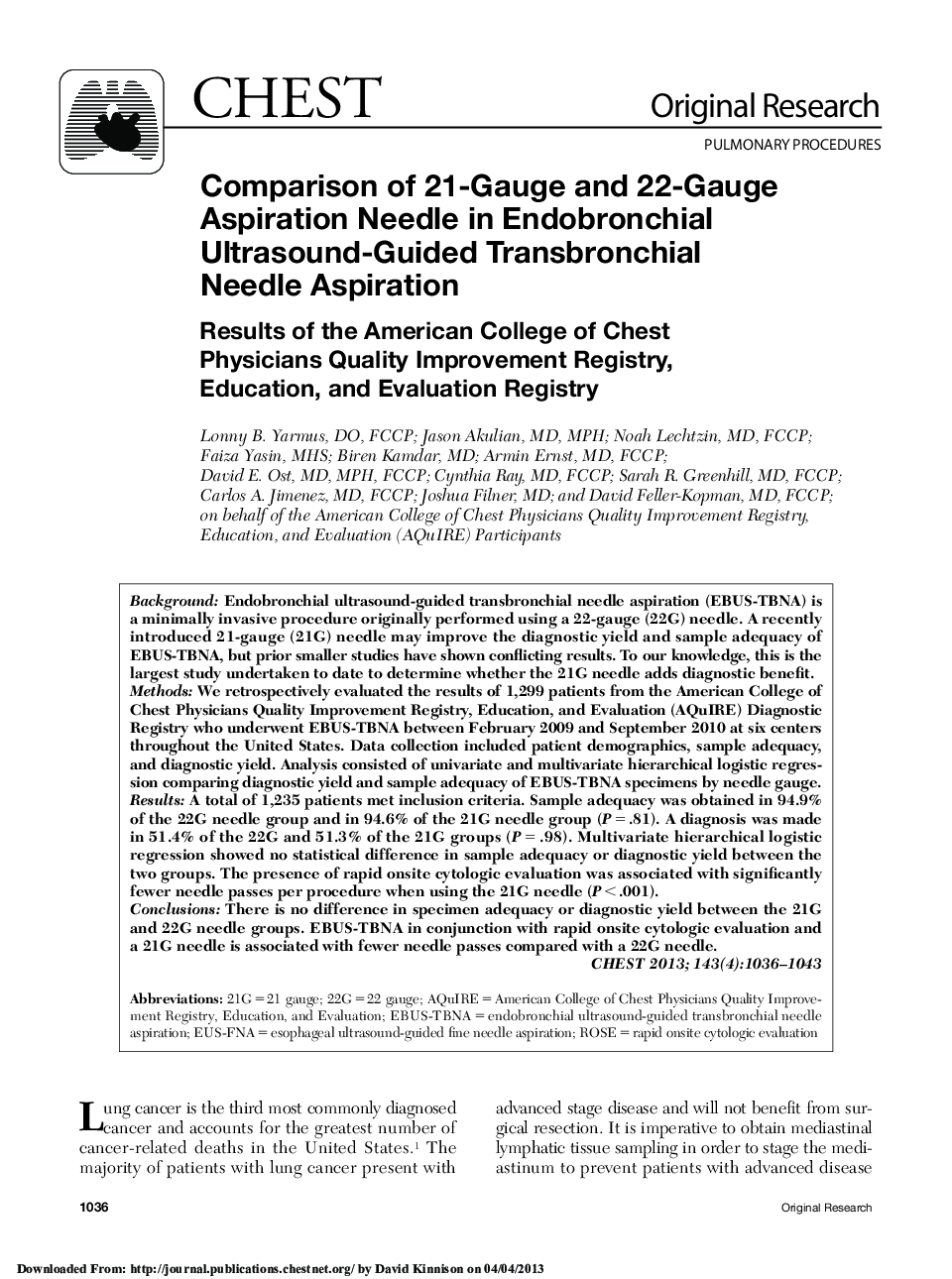| کد مقاله | کد نشریه | سال انتشار | مقاله انگلیسی | نسخه تمام متن |
|---|---|---|---|---|
| 2900705 | 1173335 | 2013 | 8 صفحه PDF | دانلود رایگان |

BackgroundEndobronchial ultrasound-guided transbronchial needle aspiration (EBUS-TBNA) is a minimally invasive procedure originally performed using a 22-gauge (22G) needle. A recently introduced 21-gauge (21G) needle may improve the diagnostic yield and sample adequacy of EBUS-TBNA, but prior smaller studies have shown conflicting results. To our knowledge, this is the largest study undertaken to date to determine whether the 21G needle adds diagnostic benefit.MethodsWe retrospectively evaluated the results of 1,299 patients from the American College of Chest Physicians Quality Improvement Registry, Education, and Evaluation (AQuIRE) Diagnostic Registry who underwent EBUS-TBNA between February 2009 and September 2010 at six centers throughout the United States. Data collection included patient demographics, sample adequacy, and diagnostic yield. Analysis consisted of univariate and multivariate hierarchical logistic regression comparing diagnostic yield and sample adequacy of EBUS-TBNA specimens by needle gauge.ResultsA total of 1,235 patients met inclusion criteria. Sample adequacy was obtained in 94.9% of the 22G needle group and in 94.6% of the 21G needle group (P = .81). A diagnosis was made in 51.4% of the 22G and 51.3% of the 21G groups (P = .98). Multivariate hierarchical logistic regression showed no statistical difference in sample adequacy or diagnostic yield between the two groups. The presence of rapid onsite cytologic evaluation was associated with significantly fewer needle passes per procedure when using the 21G needle (P < .001).ConclusionsThere is no difference in specimen adequacy or diagnostic yield between the 21G and 22G needle groups. EBUS-TBNA in conjunction with rapid onsite cytologic evaluation and a 21G needle is associated with fewer needle passes compared with a 22G needle.
Journal: Chest - Volume 143, Issue 4, April 2013, Pages 1036–1043